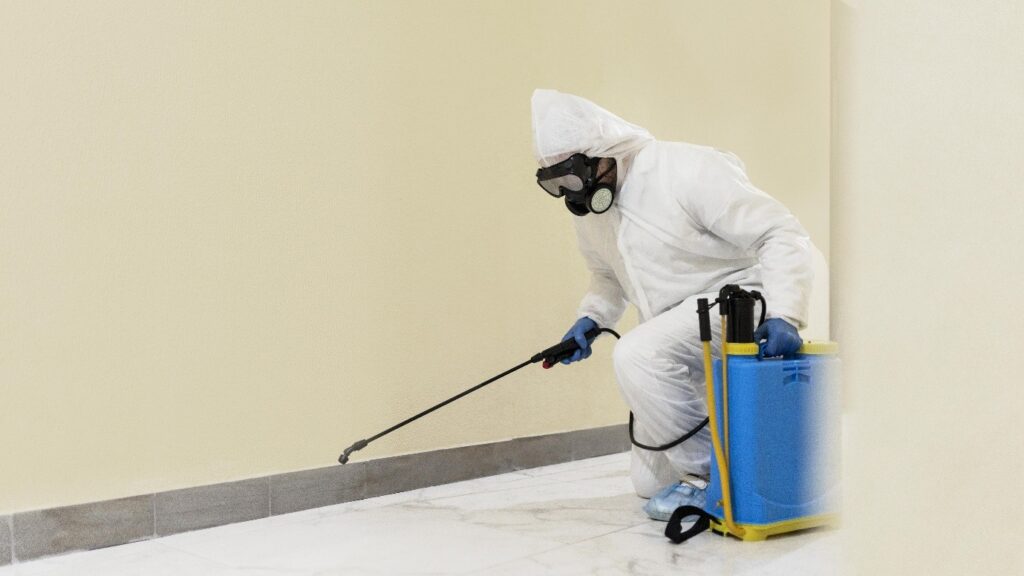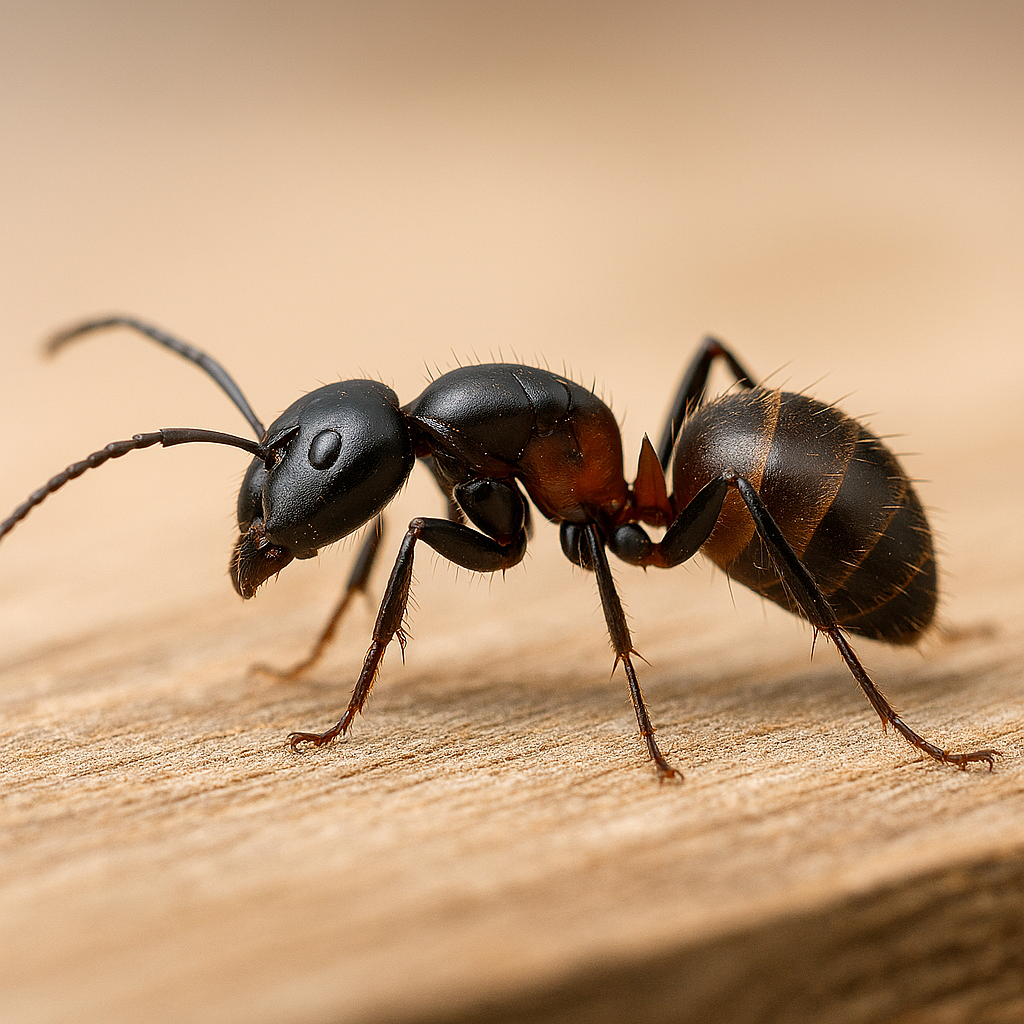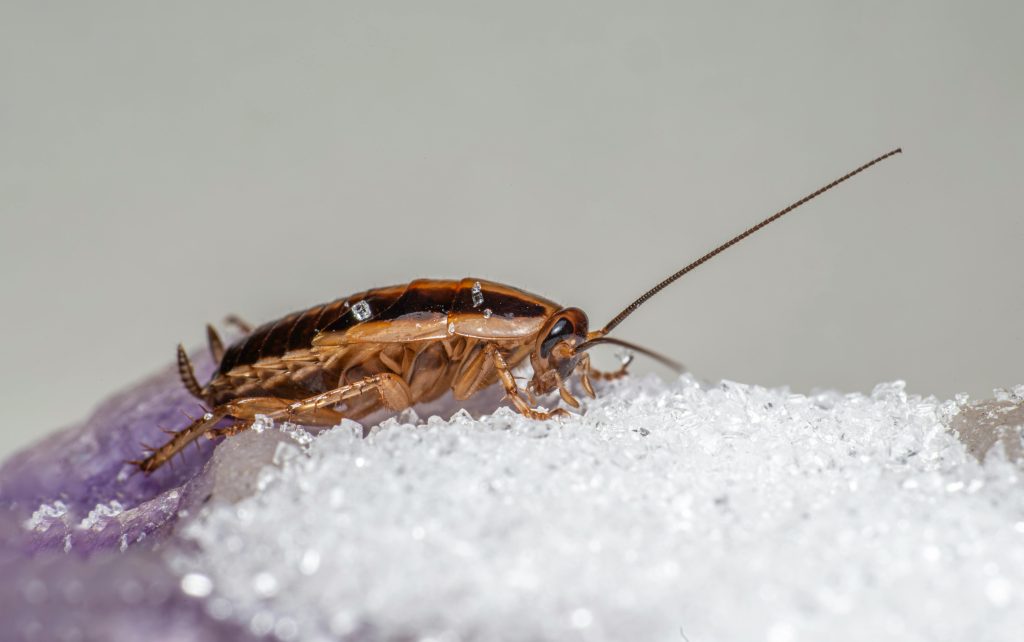When it comes to wood-destroying pests, carpenter ants and termites are often mistaken for one another—but their biology, behavior, and impact on your home are vastly different. Misidentifying these pests can lead to ineffective treatments and costly damage. This guide breaks down the key differences to help you protect your property with confidence
Physical Differences: How to Tell Them Apart
| Feature | Carpenter Ants | Termites |
|---|---|---|
| Size | ½ to ⅝ inch | ¼ to ½ inch |
| Color | Black, red, or combination | White, cream, brown, or black |
| Body Shape | Pinched waist (hourglass shape) | Straight, tube-like body (no waist) |
| Antennae | Bent or “elbowed” | Straight and beaded |
| Wings (Swarmers) | Uneven: front wings longer than hind | Equal-sized wings longer than body |
| Eyes | Large and well-developed | Small or absent in workers |
Behavior & Feeding Habits
Carpenter Ants
Most commonly found species of carpenter ants in North America is black carpenter ant.
- Diet: Do not eat wood; they excavate it to build nests.
- Damage Pattern: Smooth, clean tunnels in wood.
- Colony Size: Smaller colonies with satellite nests.
- Moisture Needs: Prefer damp or decaying wood but can adapt to dry areas.
Termites
Most commonly found species of termites in North America are subterranean termites, Formosan termites and dry wood termites.
- Diet: Eat wood for its cellulose content.
- Damage Pattern: Consume wood from the inside out; often hidden.
- Colony Size: Large colonies with workers, soldiers, and swarmers.
- Moisture Needs: Thrive in humid, damp environments.
Signs of Infestation
| Sign | Carpenter Ants | Termites |
|---|---|---|
| Frass (Droppings) | Wood shavings near nest sites | Coffee-ground-like droppings |
| Mud Tubes | ❌ Not present | ✅ Common along walls and foundations |
| Rustling Sounds | ✅ Audible in walls | ❌ Usually silent |
| Winged Insects Indoors | ✅ Spring/summer swarmers | ✅ Often after rain |
| Wood Damage | Smooth galleries | Hollowed wood, often hidden |
Treatment & Control Options
Contacting a professional pest control company is always recommended for effective treatments and complete eradication of pest issues.
Termite Control
- Liquid termiticides for soil treatment
- Baiting systems to eliminate colonies
- Wood treatments with borates
Carpenter Ant Control
- Slow-acting bait systems
- Non-repellent insecticides
- Dust treatments in wall voids
Prevention Tips for Carpenter Ants:
- Fix leaks and eliminate moisture sources
- Remove decaying wood and stumps
- Seal cracks and gaps in your home’s exterior
- Store firewood off the ground and away from the house
- Schedule annual pest inspections
Prevention Tips for Termites:
- Fix leaks and eliminate moisture sources
- Remove decaying wood and stumps
- Seal cracks and gaps in your home’s exterior
- Store firewood off the ground and away from the house
- Schedule annual pest inspections
Related Resources
Final Thoughts
Carpenter ants and termites may look similar, but their impact on your home—and the way you treat them—are worlds apart. By understanding their differences, you can take smarter steps toward prevention, detection, and control.






